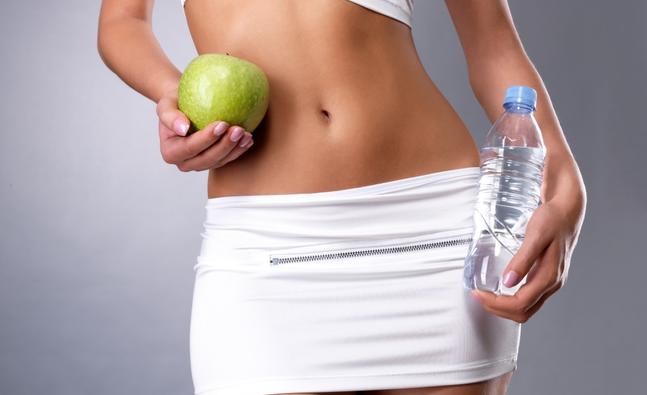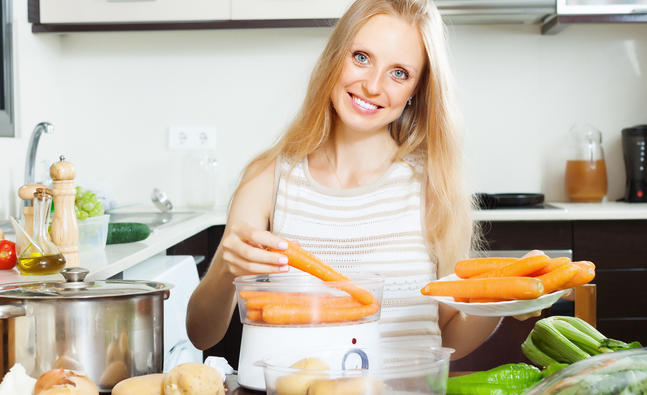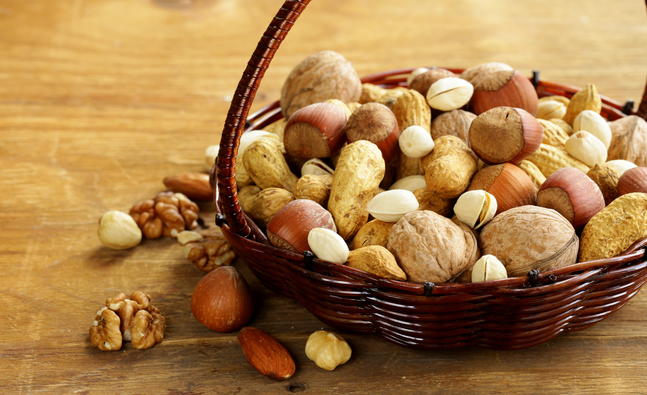Should you spring into a detox diet?

Days are starting to get longer, temperatures are rising and, while some of us canât wait for summer, many dread the short-sleeves synonymous with the season. Can the infamous âdetoxâ help you feel better and even help you lose a little winter weight?
There are many different types of detox programmes, all typically including a period of fasting followed by a strict diet of raw vegetables, fruit, fruit juices and water. In addition, some detox diets advocate using certain herbs and other supplements along with colon cleansing (enemas) to help empty the intestines. Most detox diets last seven to 10 days. Detox, or detoxification, diets are popular, but theyâre not scientifically proven.
To detox or not to detox?
A detox plan may have many benefits. It gets you thinking about how eating habits affect health and wellbeing. It encourages you to make a special effort to change your eating habits and to cut down on fatty, salty and sugary foods and to eat more fruit and vegetables, grains, nuts, seeds and fish whilst cutting back on caffeine and alcohol. In addition, it gives you an âI'm taking charge of my healthâ buzz, boosting self-confidence and motivating you to keep on following a healthy lifestyle.
Ideally, you should mostly be eating a healthy balanced diet, so an actual detox would not be necessary or beneficial. But there are times we need a little nudge in the right direction to get back on track after overindulging or a kick start a healthier eating plan.
Principles of a balanced detox
-
Eat light and eat often. Light meals will ease your digestion
-
Eat as much plant foods as possible. Plants are high in antioxidants and phytochemicals
-
Choose foods that are high in fibre. This facilitates colon health and increases the feeling of fullness
-
Focus on unsaturated and essential fats. These include nuts, seeds, avocado and olives
-
Choose higher fibre or Low Glycaemic Index (GI) foods. This helps control your blood glucose levels and keeps you feeling fuller for longer
-
Choose foods that are high in nutrients, including vitamins, minerals and antioxidants.
-
Eat liver and kidney friendly foods to facilitate the detoxification process (cruciferous, allium and diuretic vegetables*)
-
Drink plenty of hydrating fluids. Good choices are water, pure juice and herbal teas.
Some vegetables are known to enhance the detoxification process
Include these foods as much as possible:
-
Cruciferous vegetables: brussels sprouts, broccoli, cabbage, cauliflower, kale, kohlrabi, turnips, watercress
-
Allium vegetables: chives, garlic, leeks, onions, spring onions, green onions, shallots
-
Diuretic foods: cucumber, celery, cranberries, watermelon, parsley, fennel, celery, green beans, asparagus
Is there a downside?
Some detox programmes are little more than fad diets or fasts. Itâs better to be balanced and try to incorporate the principles of balanced, healthy eating rather than simply going on a detox diet or doing a âsystem spring-clean.'
Itâs also important to consider possible side effects. Among other problems, detox diets can lead to fatigue, dizziness and nausea. Although detox could help you lose weight fast, safe and sustainable weight loss should be not too drastic, about one kilogram per week.
Keep in mind that a detox isn't a quick fix. Real and lasting body cleansing does not come through a fast, in a pill or a footpad â real and lasting detoxification is the result of a long-term change in awareness, choices and lifestyle.
Who shouldn't detox?
If you suffer from any illnesses, are pregnant, or have problems such as heart disease, diabetes, low blood sugar or kidney problems, please consult your doctor or dietitian before following any new eating plan.
A guide if you plan to do a âdetoxâ
On waking â have warm water infused with fresh lemon, mint and ginger.
Each meal should be made up of the following:
1. Fruit, salad and/or vegetable (include as many cruciferous, allium and diuretic vegetables as possible)
2. Low GI, higher fibre carbohydrate (legumes, beans, lentils, barley, sweet potato, oats, sweet corn, wheat free bread)
3. Healthy fat (nuts, seeds, olives, avocado, cold pressed oils)
Breakfast ideas:
-
Fresh fruit smoothie using 2-3 fresh fruits, a handful of nuts and lots of ice. Optional: Add oatbran for a fibre boost.
Or
-
Sliced pear wedges and banana dipped into natural nut butter.
Or
-
Rolled oats served with grated apple or berries sprinkled with cinnamon.
Light meal ideas
-
Roasted veggies using leeks, Brussels sprouts, sweet potato, squashes, etc. roasted with fresh herbs, garlic and olive oil.
Or
-
Barley or sweet corn salad prepared with selection of chopped allium and diuretic vegetables such as spring onion, asparagus and cucumber.
Or
-
Vegetable stirfry using cabbage, carrots, onions, sweet peppers, mushrooms, etc.
Or
-
Large rocket and watercress salad with spring onion, sweet peppers, cherry tomatoes, olives, etc. Toss in chickpeas or sweetcorn or serve with wheat free bread.
COOKING TIP: Prepare meals using garlic and onions and use lots of fresh herbs (coriander, parsley, mint, etc.)
Snack ideas
Fresh fruit, fruit bars, small amounts of pure fruit or vegetable juice or dried fruit. Selection of crudités and hummus dip. Nuts, trail mix, seeds.
First published on Biznewz.biz
For more information, visit www.celynnerasmus.com or email [email protected] and for more weight loss tips, click here.
-
Find your bliss and lose weight – sip this
-
10 Tips Thatll Help You FINALLY Lose Those Last 10 Pounds
This article was written by Lizzie Fuhr and repurposed with permission
-
Jillian Michaels golden tips for staying slim
-
10 SIMPLE DIET CHANGES THAT WILL HELP YOU LOSE WEIGHT
10 Simple Diet Changes That Will Help You Lose Weight We’re no
-
Reach for the red sauce!
-
How reading your horoscope can derail your diet
- DON'T MISS
- Fad diets not good for permanent weight loss
- Use a tall, thin glass!
- Losing just 30 minutes of sleep a night promotes weight gain
- Speed weight loss with an active hobby
- Facebook Fat Pants Controversy
- What is the Twinkie diet about?
- Best Weight Loss Clinics /Centers In Kolkata – Our Top 10 Picks
- 5 Weight-Loss Strategies You Should Absolutely Avoid
- The TODAY Show Anchors Reveal Their Weights
- Dont delay breakfast




